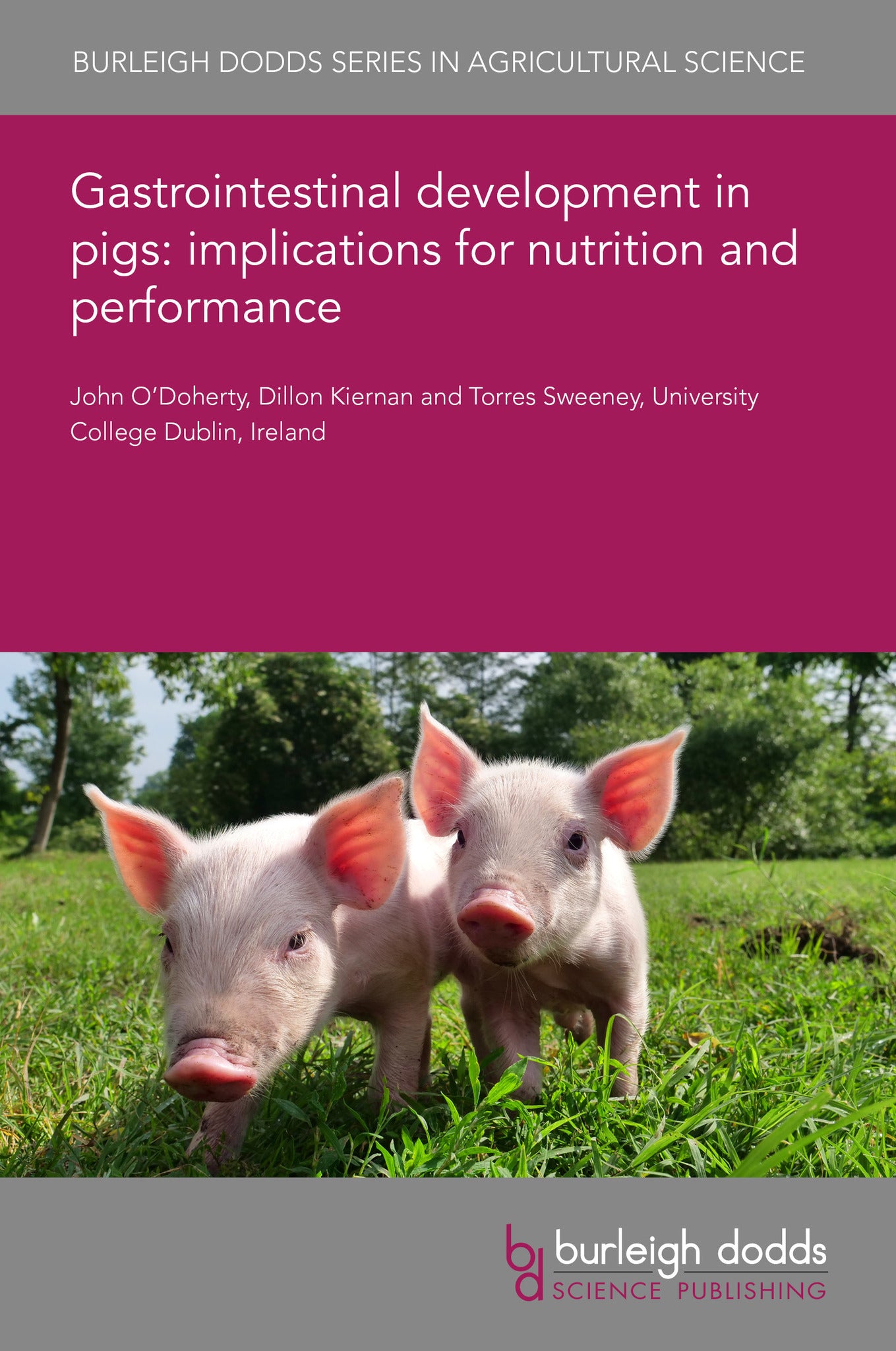We're sorry. An error has occurred
Please cancel or retry.
Gastrointestinal development in pigs: implications for nutrition and performance

Some error occured while loading the Quick View. Please close the Quick View and try reloading the page.
Couldn't load pickup availability
- Format:
-
23 July 2024

This chapter discusses the pivotal developmental changes within a pig's gastrointestinal system (GIT) across various life stages, emphasizing their importance for achieving growth, health, and feed efficiency. The authors begin by describing how during the prenatal phase, the GIT experiences substantial growth, particularly in intestinal mass. They then examine how after birth, dynamic GIT changes occur, notably how establishment of the pig's intestinal microbiota begins shortly after birth. The authors next explore the challenges that weaning presents, including reduced feed intake, stress, and gut microbiota shifts affecting GIT's pH regulation, enzyme production, and intestinal barrier function. They then outline how dietary strategies can address these issues.

TECHNOLOGY & ENGINEERING / Agriculture / Animal Husbandry, Animal husbandry, TECHNOLOGY & ENGINEERING / Agriculture / Sustainable Agriculture, Sustainable agriculture

- 1 Introduction
- 2 Prenatal development of the foetal pig's gastrointestinal tract
- 3 Postnatal gastrointestinal tract growth
- 4 Dietary modulation for enhanced stomach development and functionality in young pigs
- 5 Digestion and absorption of nutrients
- 6 Conclusion
- 7 Where to look for further information
- 8 References



